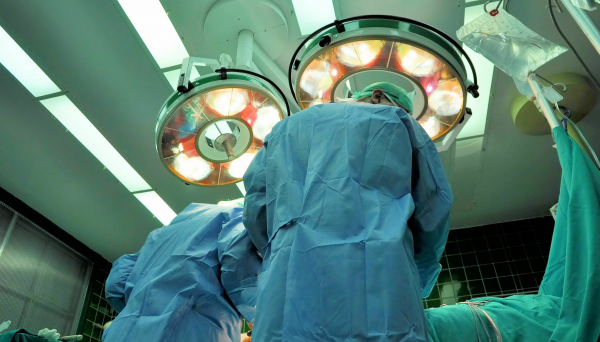Pat Williams, the managing director of Edwards Lifesciences Australia, New Zealand and Korea, says the next health minister will face many challenges, including the backlog in so-called elective surgery.

With less than two weeks till the Federal Election, healthcare has not been a major feature of the campaign, but whoever is the Minister for Health after May 21, they will face several challenges, state hospital funding, workforce shortages, private health insurance premiums and health technology assessment review just to name a few.
As the Australian Medical Association (AMA) and other healthcare peak bodies have indicated surgery that is elective does not mean that it is optional.
Delays to elective surgery due to COVID lockdowns during these past two years have had serious impacts on the quality of life for many Australians, especially those with conditions like aortic stenosis.
Aortic stenosis is the narrowing of the heart valve which makes the heart work harder to pump blood around the body. If not identified, or treated effectively, more than half of those living with severe symptomatic aortic stenosis may die within two years.
The average heart beats 80 times a minute - relying on healthy valves to promote blood flow. Now imagine having to wait longer than 90 days for a lifesaving, heart valve replacement procedure. This is the reality for patients in some of Australia’s major hospitals.
The AMA Public Hospital Report Card shows in 2020-21, around one in three patients waited longer than the recommended 90 days for a Category 2 elective surgery, such as a heart valve replacement.
For over 60 years, Edwards Lifesciences has led the global charge in delivering heart valve innovations for patients. We dedicate ourselves to the improvement and enhancement of lives by partnering with clinicians and stakeholders across the global healthcare landscape.
We need solutions so patients are not staying on the waiting list any longer. One such solution would be a review of the National Elective Surgery Categorisation Guidelines.
In 2012, the Australian Institute of Health and Welfare and the Royal Australasian College of Surgeons worked together with other healthcare groups to develop national definitions for elective surgery.
This resulted in the National Elective Surgery Categorisation Guidelines (2015). However, there was a suggestion that the list proposed might be too restrictive and should be broadened to include more diagnostic procedures, interventional radiological procedures, insertions of lines, magnetic resonance imaging, some obstetrics procedures and cardiac ‘structural heart’ implantation devices.
Under the Guidelines, Heart Valve Replacement falls under category 2. The problem is the elective waiting list for this procedure neglects to include the full range of therapy options, including Transcatheter Aortic Valve Implantation (TAVI), an alternative to open-heart surgery to replace your aortic valve. We contend that should be a reportable procedure.
A TAVI procedure typically takes one hour. Most patients are up and walking within 24 - 48 hours after the procedure, and with some within 4 hours of the procedure. The typical hospital stay is no more than 3 days. Patients typically experience an almost immediate benefit in terms of improved blood circulation. Since the replacement valve is placed using minimally invasive techniques, patients experience a faster recovery than they would from a traditional, surgical heart valve replacement.
We believe a review of the Guidelines and its inclusion of TAVI as a minimally invasive alternative to surgical options will not only help the current backlog but also ensure that patients are not presenting in emergency rooms due to treatment delays.
We are calling on the next Federal Minister for Health, along with State and Territory Ministers to work with stakeholders to commission an immediate review of the Guidelines, so they are fit for purpose in 2022 and beyond.
Pat Williams, Managing Director, Edwards Lifesciences Australia, New Zealand and Korea
